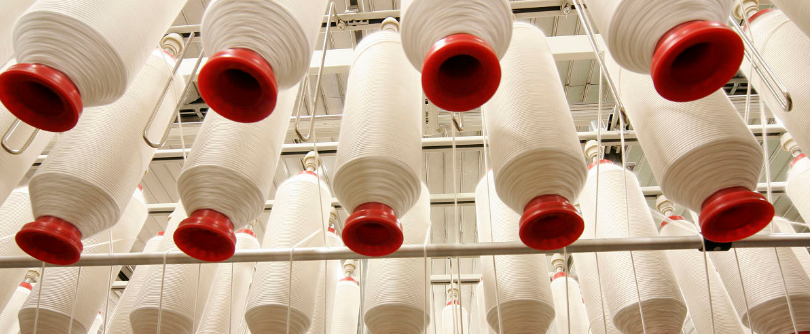The spinning process determines the fundamental quality of the fabric!

The raw materials determine the quality of the fabric, and the quality of the fabric is inseparable from the spinning steps.
One-stop cleaning (removal of impurities): affects cleanliness and strength
Blowrooming is a process in the spinning process, and the object of sorting is the cotton bales from ginning. It is to open raw cotton, remove impurities, mix different ingredients, and form rolls or sheets for finishing in the next process.
Impact: Insufficient removal of impurities and damage to fiber strength will irreversibly reduce the quality of the final spun yarn.
Second carding (removing impurities into strips): affecting cleanliness and uniformity
Carding uses a flat or roller carding machine to card the small cotton bundles into a single fiber state with the help of needle surface leisure, further removing impurities and non-spun short fibers, and making the fibers parallel After straightening, the cotton sliver is made and coiled into a can.
Impact: The carding process can reflect the management level and equipment quality of a cotton textile enterprise. No matter how good the raw cotton is, if there is no good equipment and good people to operate it, it will not be able to spin good yarn.
Three drawings (improved structure): Affects evenness and weight per square meter
The fiber material has been made into continuous strip-shaped semi-finished products through the opening and carding process. The quality and structural state are still far from the requirements of the final yarn. The straightening of the fiber The accuracy and resolution are poor. If they are used directly in subsequent processes, they will definitely affect the quality of the yarn. Therefore, they must first go through the drawing process to merge, draft, and mix multiple semi-finished products into strips.
Influence: The quality of the cooked strips directly affects the evenness and quality deviation of the spun yarn, and ultimately affects the quality of the fabric. Controlling the drawing quality is an important step in achieving high-quality fabrics.
Four rovings (drafting and twisting): affecting strength and uniformity
Roving is to sort the cooked strips generated in the previous process into rovings of different counts and twists for the subsequent spinning process.
Impact: Poor control of the roving process will lead to easy breakage and unevenness in the next process, and ultimately cannot be used for weaving fabrics with higher quality requirements.
Five fine yarns – spinning yarn forming: affecting yarn count accuracy and strength
The spinning process is the last process in spinning production. It is to spin the roving into a spun yarn with certain characteristics, in line with quality standards or customer requirements, for use in twisting, woven or knitted fabrics, etc. .
Impact: Spinning is a particularly important process in spinning. The production scale of a cotton textile factory is often expressed by the total number of spindles of the spinning frame. The output of spun yarn is the basis for determining the number of machines equipped for each process in the spinning mill; production The quality level, consumption of raw materials, machine materials, electricity, etc., labor productivity, equipment integrity rate, etc. also reflect the quality of the spinning mill’s production technology and management level.
Six-winding (reel impurity removal): affecting cleanliness and extensibility
Winding (also known as winding) is a process of pre-weaving preparation. Its task is to organize the bobbins or hanks from the spinning department into packages that meet certain requirements on the winding machine.
Impact: Poor winding quality will directly affect the quality of subsequent processes.
Seven twists (increased tightness): affects strength and uniformity
The purpose of twisting raw silk is to increase its tightness. In addition to increasing the tightness, the purpose of ply twisting can also change its package form and linear density to meet the requirements of finishing and use.
Impact: Uneven yarn twisting, insufficient or excessive yarn tightness will directly lead to quality problems in the weaving process.
——Professional functional fabric supply and application comprehensive service provider. The company has strong scientific and technological research and development capabilities, advanced production inspection methods, and has self-operated import and export rights . It is also an ISO9001-2008 and ISO4001-2004 certified enterprise. The main products include: anti-static series, high temperature resistance and fire protection series, fire protection series, oil and water repellent and three-proof series, acid and alkali resistance series, general workwear fabrics and accessories, etc. . Involving metallurgy, fire protection, petroleum, chemical industry, machinery, medical and other industries. Decades of hard work, market-oriented, innovation-driven, quality-based survival, progress and growth. Technology provides you with a full range of solutions And complete products and services.
AAANHJJGHSFW
Disclaimer:
Disclaimer: Some of the texts, pictures, audios, and videos of some articles published on this site are from the Internet and do not represent the views of this site. The copyrights belong to the original authors. If you find that the information reproduced on this website infringes upon your rights, please contact us and we will change or delete it as soon as possible.
AA







